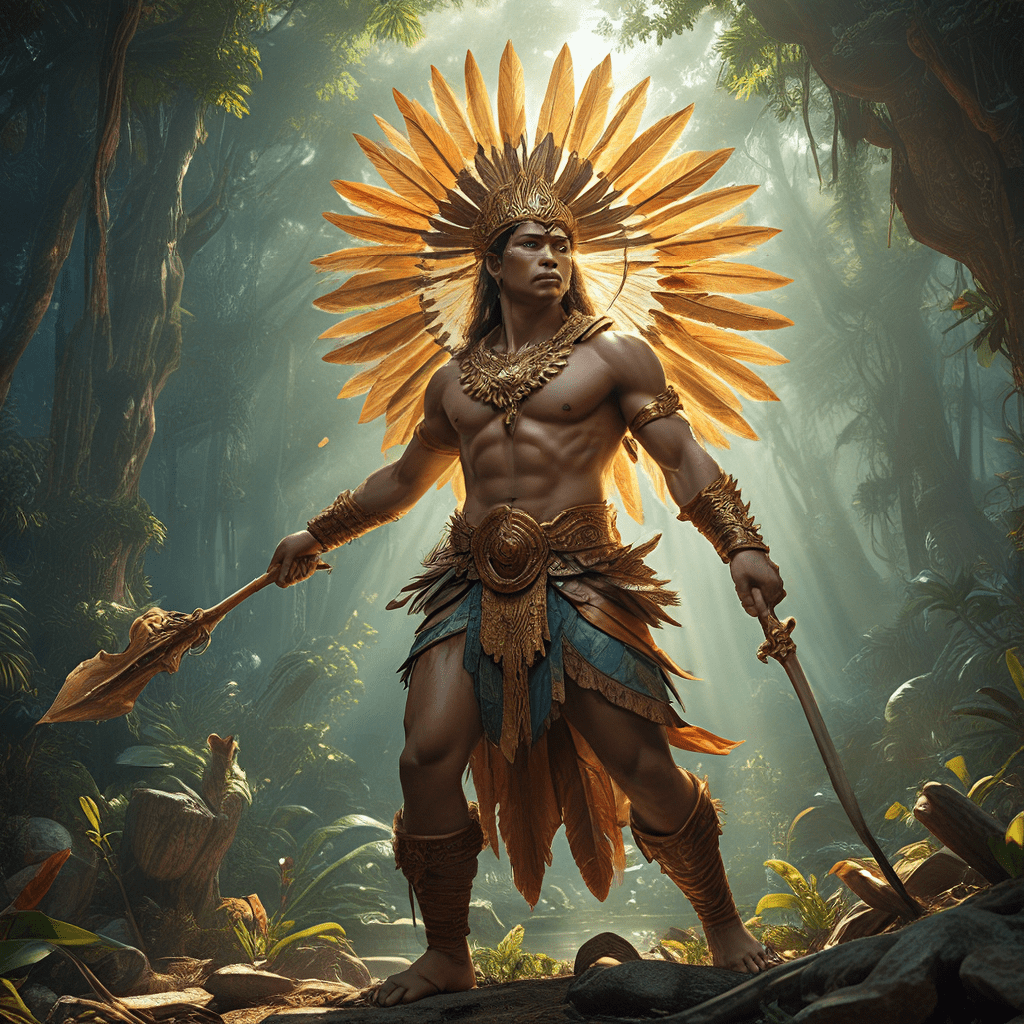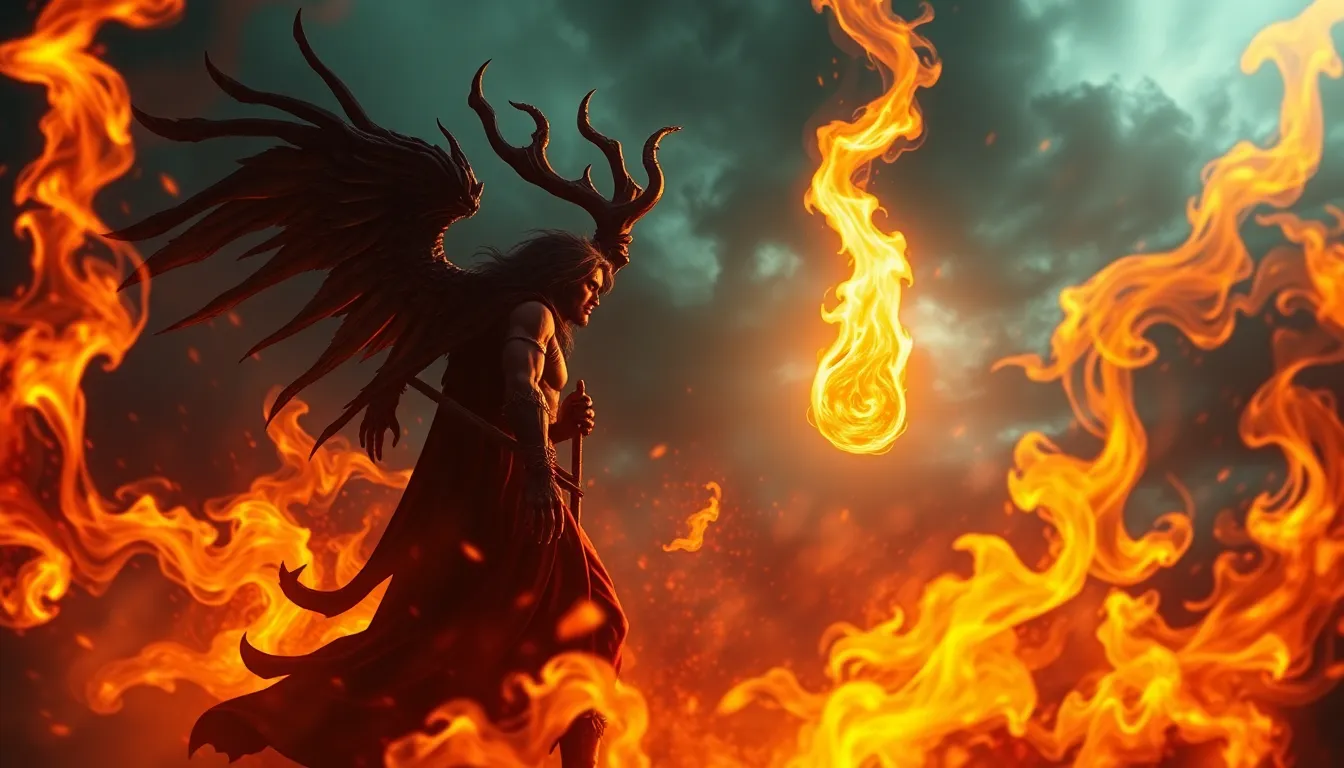Indonesian Dance: Rooted in Myth and Legend
I. Weaving Myth and Movement: A Dance of Creation
Indonesian dance, a vibrant tapestry of movement and expression, is deeply intertwined with the country's rich mythological heritage. From the ancient tales of gods and goddesses to the epic adventures of legendary heroes, myths serve as the foundation for many traditional dance forms. These stories, passed down through generations, are not merely narratives but living, breathing expressions of cultural identity, beliefs, and values. Each step, gesture, and costume embodies the essence of these myths, creating a powerful connection between the past, present, and future.
II. The Divine Choreographers: Gods, Goddesses, and the Birth of Dance
In the ancient Indonesian belief system, the gods and goddesses were not merely distant figures but active participants in the lives of human beings. They were seen as creators, protectors, and even teachers, inspiring art, music, and dance. The Hindu epics, the Ramayana and Mahabharata, which were introduced to Indonesia centuries ago, further enriched this mythological landscape. These stories, filled with divine beings, epic battles, and romantic entanglements, provided fertile ground for the development of dance forms.
The stories of the gods and goddesses, their actions, and their emotions served as the basis for dance expressions. The grace and strength of the gods, the elegance and beauty of the goddesses, and the dramatic conflicts and resolutions of the epics were translated into movements, costumes, and musical compositions. The dance became a way to honor, invoke, and connect with the divine, offering a tangible expression of spiritual beliefs.
III. The Legend of the Kecak: A Dance of Ramayana and Fire
The Kecak, a dynamic and powerful dance form originating from Bali, is a prime example of how myth fuels dance tradition. This theatrical performance, based on the epic Ramayana, tells the story of Rama, Sita, and Hanuman. The Kecak features a large group of men, dressed in white, who chant rhythmically, creating a powerful, hypnotic atmosphere. Their synchronized movements, combined with dramatic storytelling and elaborate costumes, bring the epic tale to life.
The Kecak is not just a dance but a ritual. The chanting of the chorus, mimicking the cries of monkeys, symbolizes the strength and unity of Hanuman's army. The fire that burns in the center of the performance represents the divine power that guides Rama in his quest. The Kecak, therefore, is a captivating blend of myth, ritual, and theatricality, offering a glimpse into the ancient world of storytelling and spiritual belief.
IV. The Serimpi of Yogyakarta: The Dance of the Goddesses
The Serimpi, a dance form originating from the Yogyakarta region, is deeply rooted in the myth of the female deities. This graceful and refined dance, traditionally performed by women, is a celebration of the beauty, elegance, and spiritual power of the goddesses. The Serimpi dancers, adorned in elaborate costumes and headdresses adorned with flowers and jewels, embody the elegance and grace of the divine beings they represent.
The movements of the Serimpi are fluid and expressive, often mimicking the movements of flowers swaying in the breeze or water flowing gently over rocks. The dance is often accompanied by gamelan music, a traditional Indonesian orchestra, creating a harmonious and evocative atmosphere. The Serimpi, therefore, is a captivating blend of beauty, grace, and spirituality, offering a glimpse into the world of the divine feminine.
V. The Tari Saman: A Dance of Unity and Harmony from Aceh
The Tari Saman, a dance form originating from Aceh, Indonesia, is a powerful expression of unity, harmony, and community. This dance, performed by a group of men, features intricate hand and body movements that are synchronized to a rhythmic beat. The movements are often accompanied by chants and claps, creating a vibrant and energetic performance.
The Tari Saman is said to have originated from the legend of a wise and powerful leader who used dance as a means to unite his people and teach them valuable life lessons. The intricate movements and synchronized rhythms symbolize the importance of cooperation, discipline, and respect within the community. The Tari Saman is, therefore, a celebration of community, tradition, and cultural identity, showcasing the strength and unity of the Acehnese people.
VI. Theories of Mythological Influence: Shaping Indonesian Dance
The profound influence of myths on Indonesian dance has led scholars to explore various theories about this relationship. Some believe that dance evolved from ancient rituals, where movements and gestures were used to communicate with the spirits and gods. Others suggest that dance developed from storytelling traditions, where actors would use their bodies to reenact epic tales and myths. The introduction of Hinduism and Buddhism further enriched the mythological landscape of Indonesia, providing new narratives and deities that inspired dance forms.
These influences are evident in the symbolism embedded within Indonesian dance movements. Each gesture, posture, and step can carry a specific meaning related to a myth or legend. For example, the graceful movements of the Serimpi dance may represent the flowing grace of a goddess, while the powerful strides of the Kecak dance might symbolize the strength and determination of a mythical hero. The mythological narratives also play a crucial role in determining the structure, costumes, and music of dance performances, creating a holistic and immersive experience.
VII. The Role of Oral Traditions: Preserving and Transmitting Myths
Oral traditions have played an essential role in preserving and transmitting Indonesian myths and legends, ensuring their survival through generations. Storytellers, elders, and teachers have passed down these stories through word of mouth, often embellishing them with their own interpretations and insights. In this way, myths have remained vibrant and relevant, adapting to changing societal contexts while maintaining their core essence.
Dance has served as a powerful tool for preserving and transmitting these oral traditions. Through elaborate movements, expressive gestures, and symbolic costumes, dancers have brought these stories to life, making them accessible and engaging for audiences of all ages. By incorporating mythical narratives into dance performances, generations have been able to connect with their cultural heritage, learn valuable lessons, and celebrate their shared history.
VIII. Dance as a Ritual of Connection: Bridging the Human and Divine
In ancient Indonesia, dance was often seen as a ritualistic practice, a way to connect with the spiritual realm and seek the favor of gods and goddesses. Through rhythmic movements, evocative gestures, and symbolic costumes, dancers would pay homage to the divine, seeking blessings, protection, and fulfillment. This connection between the human and the divine is deeply ingrained in many traditional dance forms, creating a powerful sense of reverence and awe.
The Kecak dance, for example, is not just a performance but a ritual that invokes the power of Rama and Hanuman. The rhythmic chanting of the chorus, mimicking the cries of monkeys, is believed to call upon the divine force that guides the hero on his quest. Similarly, the Serimpi dance is often performed as a ritual offering to the goddesses, seeking their blessings and grace. These rituals, intertwined with dance, demonstrate the profound connection between the human experience and the spiritual world.
IX. The Enduring Legacy of Myth: Inspiring Contemporary Dance Forms
The mythical origins of Indonesian dance continue to inspire contemporary dance forms, providing a rich source of inspiration for modern choreographers. Contemporary dancers often draw upon the themes, characters, and symbolism of traditional myths, reinterpreting them in new and innovative ways. This creative fusion of tradition and modernity allows contemporary dance to engage with the past while exploring new artistic expressions.
Contemporary dance forms like "Tari Kontemporer" often incorporate elements of traditional Indonesian dance, incorporating movements, costumes, and music that reflect the country's cultural heritage. By weaving together the spirit of ancient myths with modern artistic sensibilities, contemporary dancers create an exciting and evolving dance landscape, ensuring that the legacy of mythical narratives remains alive and vibrant.
X. Beyond the Myth: Understanding the Cultural Significance of Indonesian Dance
Understanding the mythical origins of Indonesian dance helps us appreciate its cultural significance. These dance forms are not merely entertainment but embody the values, beliefs, and history of the Indonesian people. They offer a window into the cultural soul of the nation, revealing the power of storytelling, the importance of ritual, and the enduring spirit of tradition.
By exploring the myths that underpin these dance forms, we gain a deeper understanding of Indonesian culture, its rich history, and its enduring traditions. Dance, as an art form rooted in myth, serves as a powerful vehicle for cultural expression, promoting community engagement, fostering cultural pride, and transmitting valuable knowledge and traditions across generations.
FAQ
**Q: What are some of the most popular Indonesian dance forms?**
A: Some of the most popular Indonesian dance forms include the Kecak from Bali, the Serimpi from Yogyakarta, the Tari Saman from Aceh, and the Tari Legong from Bali.
Q: How do myths influence the costumes and movements of Indonesian dance?
A: Myths often dictate the costumes and movements of Indonesian dance. For example, the Kecak dancers wear white costumes representing the monkeys, while the Serimpi dancers wear elaborate costumes and headdresses symbolizing the elegance of the goddesses.
Q: Are Indonesian dances only performed in Indonesia?
A: While Indonesian dance forms are primarily performed in Indonesia, they are also gaining popularity in other parts of the world, with many international dance companies showcasing these forms.
Q: What are the benefits of learning about the mythical origins of Indonesian dance?
A: Learning about the mythical origins of Indonesian dance helps us understand the cultural significance of these dance forms, appreciate the richness of Indonesian mythology, and gain a deeper connection to the country's cultural heritage.



